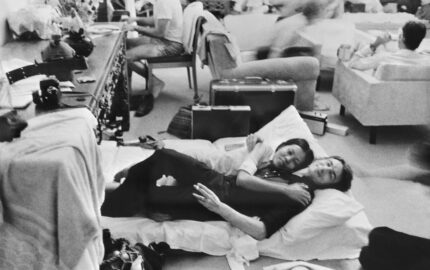The New York Times critic A.O. Scott once observed that great novels often “blend private destinies with public events.” So too with great nonfiction; it was the private sufferings of six Japanese survivors that enabled John Hersey to communicate the public horror of Hiroshima in his landmark article. Find the right protagonist, and the writer can piggyback history and explain it too.
It was Walter Lord who first helped me understand this. Before reading his book “A Night to Remember: The Classic Account of the Final Hours of the Titanic,” I knew that the Titanic had sunk. But after reading his book, that same fact left me cold, with Lord preserving in crystalline prose the icy Atlantic waters in which the ship—and some 1,500 people—went down in the spring of 1912.
Lord did not report so much as recreate. He was a tireless researcher (he interviewed, for example, 63 survivors of the doomed ship), and employed, as one reviewer put it, “a kind of literary pointillism, the arrangement of contrasting bits of fact and emotion in such a fashion that a vividly real impression of an event is conveyed to the reader.”
Still, Lord did not merely recreate history. He helped his reader to understand it. As he wrote of the Titanic, 42 years after ship struck iceberg: “Complacency vanished on that unforgettable April night and has never come back again.”
A Night to Remember: The Classic Account of the Final Hours of the Titanic
By Walter Lord
Henry Holt and Company, 1955
Excerpt
High in the crow’s nest of the New White Star Liner Titanic, lookout Frederick Fleet peered into a dazzling night. It was calm, clear and bitterly cold. There was no moon, but the cloudless sky blazed with stars. The Atlantic was like polished plate glass; people later said they had never seen it so smooth.
This was the fifth night of the Titanic’s maiden voyage to New York, and it was already clear that she was not only the largest but also the most glamorous ship in the world. Even the passengers’ dogs were glamorous.
John Jacob Astor had along his Airedale Kitty. Henry Sleeper Harper, of the publishing family, had his prize Pekingese Sun Yat-sen. Robert W. Daniel, the Philadelphia banker, was bringing back a champion French bulldog just purchased in Britain. Clarence Moore of Washington also had been dog shopping, but the 50 pairs of English foxhounds he bought for the Loudoun Hunt weren’t making the trip.
That was all another world to Frederick Fleet. He was one of six lookouts carried by the Titanic, and the lookouts didn’t worry about passenger problems. They were the “eyes of the ship,” and on this particular night Fleet had been warned to watch especially for icebergs.
Excerpt from Chapter 1 “Another Belfast Trip” from the book A NIGHT TO REMEMBER by Walter Lord. Copyright 1955 by Walter Lord. Reprinted by permission of Henry Holt and Company. All rights reserved. Reprinted by permission of Gilman School in Baltimore, MD. Walter Lord graduated from Gilman in 1935.




